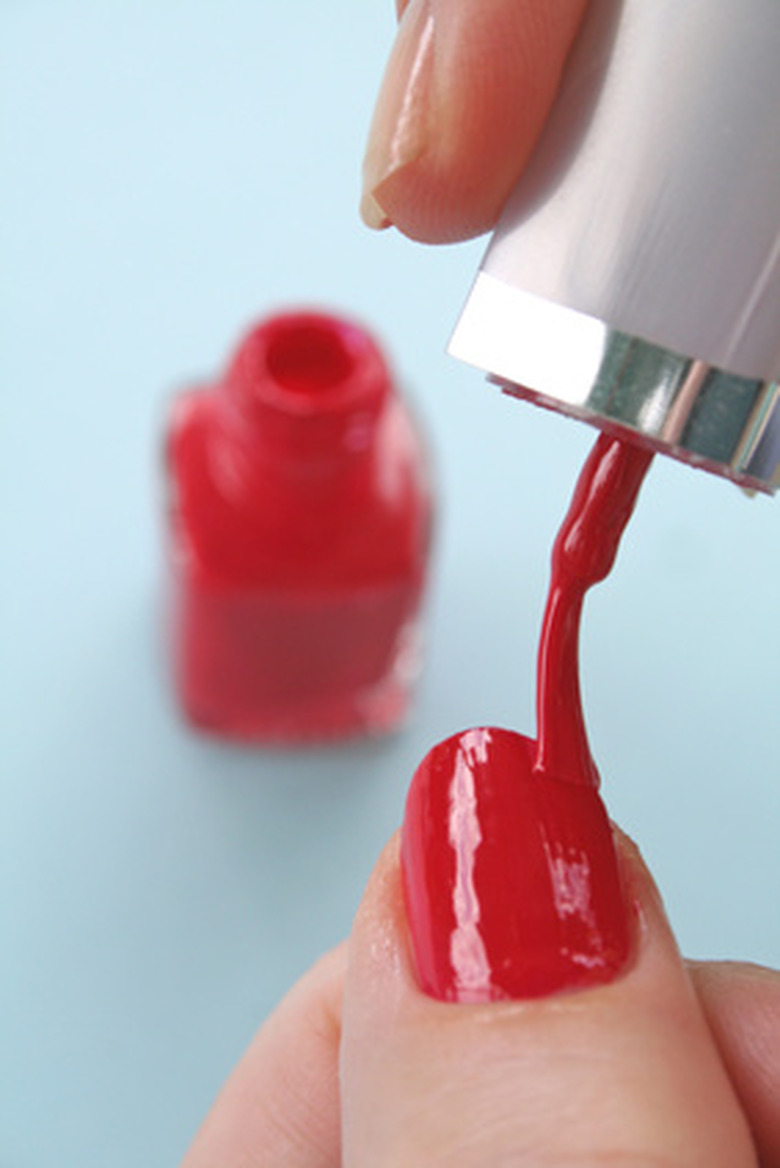How Is Acrylic Powder Made?
To understand how a polymer powder is made requires knowledge of the difference between a monomer, polymer, suspensions and what a catalyst does. No need to reach for your high school chemistry books. It's really as simple as making fake fingernails, which are made from acrylic powder that is mixed with water and a catalyst that form a resin that hardens into fake nails. That's just one application.
Monomer
Monomer
You can't make polymers without monomers. The monomers (monos from Greek means "one") in the case of making acrylic powder is methyl methacrylate. You can add it to water to create a suspension, which separates the monomer methyl methacrylate from the polymers (poly from Greek means "many"). Polymers are strands of monomers that chemically string themselves together. To hasten the process, a catalyst is usually added. Imagine it as tapioca pudding. The monomers would be the pearls in the tapioca and the polymer would be the pudding-like substance between the pearls. In the case of tapioca, the catalyst is heat. In the case of acrylic powder, the catalyst would be organic peroxide or another chemical depending on the polymer you're trying to produce.
Suspension Polymerization
Suspension Polymerization
The precipitate is the polymers spread between the pearls of tapioca. They are formed small and dry and can be created in various sizes, down to microns, which are very, very tiny. In essence, it is a fine acrylic powder that can be separated from the suspension by removing the water. Now that you have the powder, it can be applied to numerous uses. The process is actually sometimes referred to as pearl polymerization.
Bulk Polymerization
Bulk Polymerization
To make the fine acrylic powder requires a process known as suspension polymerization. Another process to connect monomers is known as bulk polymerization but that process doesn't create a fine powder but rather a resin-like substance–polyvinyl chloride (PVC), for example, which has many uses but is best known as PVC, or plastic pipe, that is used extensively in modern-day building construction.
Why Make Acrylic Powder
Why Make Acrylic Powder
By itself, acrylic in a powder form has few uses (except possibly for lifting latent fingerprints). When changed through various chemical and mechanical processes, many varied uses become available. By making the acrylic powder, it becomes easier for consumers to use (for fake nails, for example). In addition, the powder makes it easier for chemists and engineers to handle, for example, when the powder is applied to other industrial uses.
Uses for Acrylic Powder
Uses for Acrylic Powder
While making false fingernails is useful for those who care to do so, uses for reconstituted acrylic powders are much more wideely varied. Acrylic powder–one formed into a polymer–is used in inks, adhesives, undercoating for cars, automotive paste waxes, cosmetics, specialty coatings, dry film photo, automotive paste waxes, injection and sheet molding and silver halide photographic films. And the uses go on from there, some of them extremely specialized.
